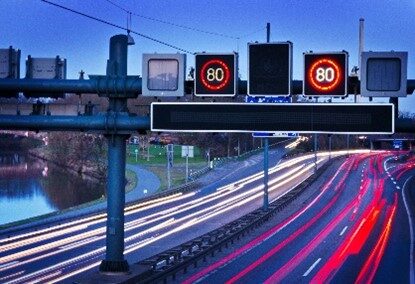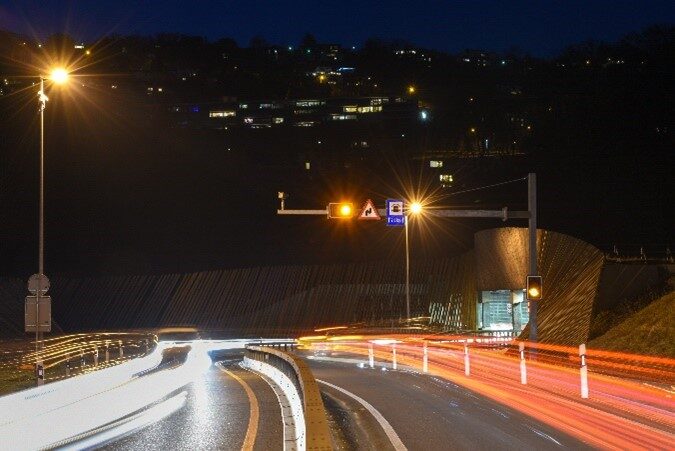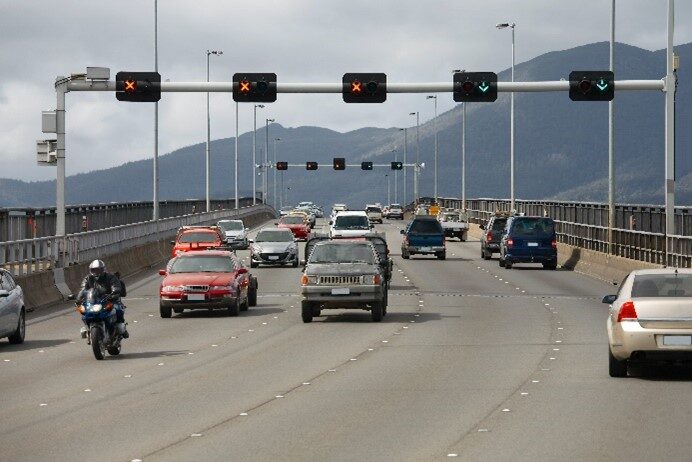Overview of the signaling of four cantons

Multi-part blog series on more road safety and traffic quality (part 3/7)
An accident in the Lucerne city tunnel, in the middle of the evening rush hour. A traffic jam forms immediately and grows rapidly. The staff at the traffic management center in Emmenbrücke and the Lucerne police are now called upon to minimize the impact of the accident on traffic. There is a clear division of tasks: the police lead the operation on site and, depending on the situation, also provide rescue vehicles from the ambulance service or even the fire department.
The traffic management center, meanwhile, is concerned with limiting the consequences of the incident for the wide-ranging traffic flow as far as possible, i.e. informing road users and rerouting them if necessary. For these tasks, traffic control systems are available to the personnel, with which a wide variety of traffic signals can be quickly controlled from the control centers. It is important for the operators to have a complete overview of all systems and, if necessary, to be able to efficiently control neighboring sections on the downstream road network (secondary nodes).

On Switzerland's national road network, road users encounter a wide variety of traffic signals. First of all, a distinction must be made between static and dynamic signals. The static signals always show the same image; in simple terms, they are printed metal panels. The dynamic signals, on the other hand, can be controlled from the control centers - the image displayed can therefore be adapted to the situation at hand. These signals allow police and traffic management personnel to react to events. A distinction is made between different types of dynamic signals. The tunnels at the portals, for example, are equipped with traffic lights.

These are normally always switched off, but can be switched to red if the tunnel is to be closed. Then there are flashing signals that are switched on to warn of an unusual situation. Another important tool are the lane light signals (FLS), which can represent a green arrow, a red cross or a yellow arrow and are used to temporarily close individual lanes.

For wide-area traffic guidance, traffic management has at its disposal, for example, the alternating text displays, which can display three lines of text and a signal.
In addition, there are also special versions of the green directional signals, which can display special images for signaling detours in addition to the normal image. Last but not least are the speed and danger signals, of which there are also versions that can show different views as required.

These dynamic signals must output timely, correct and, above all, consistent information and instructions. This task is performed by digital traffic control systems. These cover the road network section by section and provide operators with a convenient user interface for switching all signals. For the police, whose task is the local management of incidents, these traffic control systems are the ideal tool. In contrast to the police, traffic management is responsible for wide-area information and for traffic detour. Because traffic control systems typically have rather limited geographic coverage, an event with wide-area impacts may require traffic management personnel to operate a large number of traffic control systems more or less simultaneously. As a result, response time can suffer - road users may not be informed or rerouted in time.
This can be remedied by regional traffic control systems that orchestrate a large number of local traffic control systems like a conductor, and ensure
signals in a large region can be switched simultaneously and in coordination with each other.
Conclusion
Who likes to get stuck in a traffic jam for hours because information about an accident ahead was not received in time? With the "VM Zentras", the traffic management center in Emmenbrücke has a tool with which the staff can quickly inform about traffic problems and, if necessary, initiate detour via the traffic control systems.
Why a complex large-scale IT project still stands the test of time.
How to minimize the risk of a new system architecture
On the way to uniform operating and safety equipment (BSA) on the national road network
We have compiled reports on our projects, interesting facts from the various competence and customer areas as well as information about our company for you here.
